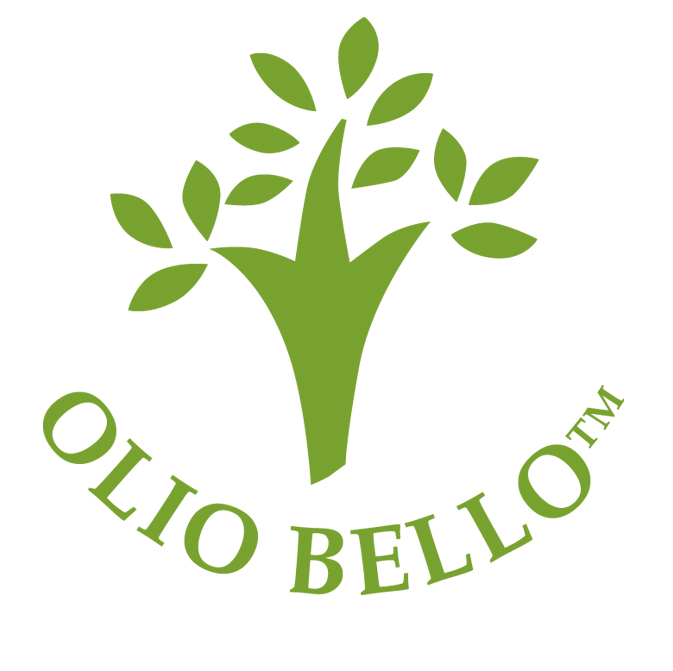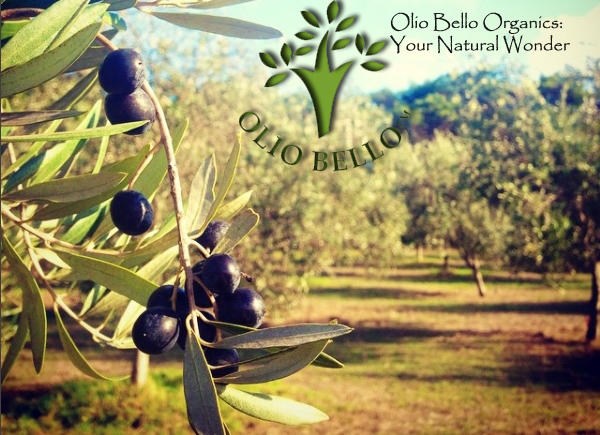Executive Summary
The purpose of the report is to understand how to build awareness for the Olio Bello Organics brand, making it more recognizable on the local, national, or international level. Since the brand Olio Bello has already received various local and national awards, it is possible to increase brand recognition using its honors. The report also aims to understand how the packaging for the Olio Bello Organics product range can be transformed or designed to raise more awareness of the brand.
The first recommendation is to promote brand products about the experienced and awarded manufacturer. The combination of the two main advantages of the brand can bring new customers and supporters to the brand.

The second recommendation is to use ambient advertising, as well as samples, coupons, and loyalty programs, as promotion strategies. While ambient advertising will attract attention, samples, and coupons bring the opportunity to introduce the product directly to the consumers.
The third recommendation is to use intensive distribution to raise awareness for Olio Bello Organics. While the brand is not widely recognized, this strategy will help advertise the product to customers of all ages and from all social levels.
Introduction
Olio Bello (Olio Bello Certified Organic Extra Virgin Olive Oil) is a manufacturer of olive oil, as one can already understand from the name of the firm. However, Olio Bello can offer the customers much more than a beautiful, grown in Margaret River region oil. The customers can also visit the tasting room, discover and taste something new and curious in the gourmet retail outlet, visit the firm’s deli-line. Moreover, Olio Bello also offers beauty products to its customers.
The shop of beauty & lifestyle products is filled with candles, bath salts, and diffusers. Because Olio Bello cares about their customers and the products that are offered to them, hand creams, body lotions, and eye gels, presented in the shop, are organic. The products in the beauty & lifestyle shop are unique because they are produced by Olio Bello; the certified and awarded oil manufacturer uses organic-only materials in the products so the customers can be sure that all products are organic and environmentally friendly.
The story of Olio Bello is, as any story of a successful brand, with a glimpse of wonder. It began when an American couple Jack and Sue Witkin looked for “the perfect place to create a sustainable retreat” and found a farm that later grew into Olio Bello estate. After the orchard had grown and the thousands of trees were planted, the story of Olio Bello began.
As of today, Olio Bello is “the most awarded boutique single estate certified organic producer of extra virgin olive oil in Australia”; it has also won “2007 National Grower of the Year” and other Australian awards in the years 1998-2014. Although these awards are not linked to the oil skincare products, they can nevertheless help the brand gain trust from the consumers and retail stores.
Analysis and Evaluation of brand (SWOT Analysis)
Competitive Advantage and Positioning
The products have several competitive advantages on the market. First, Olio Bello is an experienced manufacturer, and its brand is recognizable at some level, especially in Australia. Thus, the product marketing strategy needs to focus on the Australian market since it gives the manufacturer more opportunities to promote the product. The second advantage of the Olio Bello is that it has won various awards, both local and national. The awards can increase both awareness of the brand in Australia and consumers’ attraction or interest in it.
As the interest in organic products grows, and they become more popular and trendy, this can be seen as an opportunity for Olio Bello Organics. Since the name of the brand indicates that the products are natural and do not contain any chemicals, its marketing strategy can revolve around the definition of ‘natural’, ‘organic’, and ‘healthy’. However, the market is filled with such products, so the brand needs to introduce a unique feature.
Therefore, the marketing strategy proposal focuses on the combination of the two biggest advantages of the brand: its organic products and the number of awards. This can be done with the help of a combination of concentration strategies and blue ocean strategy. Thus, the brand will compete in one industry using its recognition with awards, but, at the same time, it will offer a new idea or opportunity to the consumers (weddings at the estate, organic beauty products made by the manufacturer, etc.).
Marketing Objectives
The main aim of the marketing strategy is to build awareness of the brand; this can be done through ambient advertising, as well as the presentation of the brand’s unique features (awarded healthy organic products) on the market using concentration strategies. Concentration strategy implies the brand will follow three different strategies: market penetration, market development, and product development. This strategy is helpful when there is a high level of competition on the market, which is something we can observe in this case. However, because the brand is experienced but required more recognition, the blue market strategy will also be implemented.
This strategy argues that companies need to go beyond the demand of the customers and implement innovations. The brand has already partially implemented this strategy by combining oil manufacturing, a shop with beauty products and condiments, and weddings’ planning. Thus, to increase brand recognition all these features of the brand need to be used in the marketing strategy.
To boost brand recognition, the following marketing plan proposes a redesign of products’ packaging; with the new packaging and a poster, specifically designed for the aims of the Olio Bello Organics, it will be easier to introduce the expanded brand to the customer as something experienced, unique and modern at the same time.
Target Market
The target market of the brand is the members of the upper-middle class (and, possibly, lower too, but rarely) between the age of 28-60 years. These representatives can be interested in organic products and, at the same time, pay attention to their health and lifestyle. Since products’ price does not completely allow targeting middle class with lower income as a sustainable market, it is better to focus on the upper middle. However, representatives of the middle class with lower income can also be interested in the product as a valuable gift.
Cosmetics, produced by the manufacturer, will also be appealing to the cosmetics and beauty products stores in West Australia. Also, such facilities can keep track of the awards given to the industry representatives, so Olio Bello’s awards, although not connected to the products per se, can increase recognition among them and inspire confidence in the brand.
The product can be retailed through local hotels, guesthouses, as well as supermarket chains (e.g. Woolworths, Coles Supermarkets, BI-LO, etc.). The big advantage of the supermarket chains is that they can retail various products of the manufacturer, the beauty and lifestyle products (candles, gels, etc.), as well as gift boxes with other skincare products. Events, such as weddings at the estate, can also be promoted through supermarket chains, although it is not the best place for advertisement.
Weddings’ advertisement targets young people from 18 to 30 who have a suitable income for organizing such events, i.e. members of the high middle class or lower upper class. Although weddings are not the product Olio Bello Organics is aiming to promote, they could still play a role in advertising the skincare products and vice versa. Because skincare products are often used by young adults who may not be married but are in a long-term relationship, they can also be attracted by various opportunities that Olio Bello offers.
Product strategy
The marketing mix strategy, chosen for this product, includes four variables or the four Ps that are significant to the successful response from the consumers: product, place (distribution), price, and promotion. Product strategy implies an understanding of the target audience (who was discussed above), as well as the product’s design importance for the successful advertisement.
Olio Bello is a brand that is not unknown to the Australian market because it is well established, experienced, and awarded. However, establishing a new brand may confuse the customers, so the brand logo and packaging need to be recognizable. Thus, it is advisable to use the current logo of Olio Bello but with certain modifications that will reflect the Olio Bello Organics’ aim (to sell organic skincare products).
As skincare products target members of a certain age and social status, the product packaging should combine both aesthetically pleasant and recognizable (connected to Olio Bello) features (Refer to Figure 1). At the same time, it should indicate its organic nature and absence of any chemical products in it. Thus, the proposed colors for the packaging are green, blue (customers can link it to the sky=nature), and white (the color of purity).
The main logo of the Olio Bello needs to be used too because it will help Olio Bello Organics become more recognized on the market. Moreover, frequent buyers of Olio Bello’s products will also be encouraged to try a new product from their favorite company.

Pricing strategy
Pricing strategy is important because it directly influences consumers’ final decision about the purchase. However, often the seller can set up a price that seems fair to the company, but not to the customer. Here, it is important to both cover the direct and indirect expenses on the product, as well as ascertain that the company will have a profit from the sale. If the seller ignores the market factors, it can lead to severe losses for the company or unsuccessful launch of the product.
Correct pricing strategy is also important because, in the marketing mix, it is the only strategy that can bring income, while the other parts of the marketing mix demand cost from the seller. Only forty or fifty years ago a pricing strategy called cost-plus pricing was used, where the profit margin was added to the total cost; however, nowadays such tactics are not welcomed and will most likely ruin the successful launching of the product. Today, value-based pricing is taken into consideration by the managers much more often than cost-plus pricing. The best price is determined by the market and not by the seller as it was a couple of decades ago.
Thus, customers pay not for the product or costs, but the perceived value of the product. Since the Olio Bello Organics’ target market is not completely narrow but does not ensure that the customers will be interested in paying set prices, certain transformations in the pricing need to be done to ensure that the company will have profit from the sales. For example, a candle from Olio Bello costs 24.9AUD, while an organic body lotion costs 17.95AUD; the set prices can be considered as too high, but possibly only for the representatives of the lower middle class.
However, there are various rivals in the industry (Nourished Life, Zuii Organic, the Jojoba Company, etc.) who offer similar products but sometimes at a lower price. In the first year, it is not advisable to anticipate big profits due to high competition on the market and relative newness of the brand. However, a profit of 20% is possible to achieve due to the high quality and uniqueness of the products, as well as the experience of the company.
If the firm is aiming to present the new brand and the products connected to it as ‘organic’, it should also review the packaging materials. Many of the natural cosmetic and beauty products are sold in organic wrappings; that is why plastic materials need to be avoided. Selling products in plastic materials while simultaneously emphasizing the organic nature of the products can be considered as hypocrisy by customers, which is highly undesirable for the brand.
Place strategy (distribution)
Three distribution strategies are most commonly used: intensive distribution, exclusive distribution, and selective distribution. Although selective distribution strategy could be also considered as suitable for the product, it is important to remember that cosmetics and beauty products belong to mass-market, so intensive distribution will help the brand find its customers much quicker than any other type of distribution. While selective distribution targets specific outlets and retail stores, and exclusive distribution offer products through exclusive dealers, intensive distribution focuses on large retail stores and supermarkets that can increase the number of impulsive purchases of the product.
Although the brand targets middle-class representatives with high income, to increase its recognition and raise awareness for the Olio Bello Organic, the products should be sold through big mass-market retailers, i.e. supermarket chains. As organic products are considered to be a trend, distribution in supermarket chains will introduce the product to a big number of consumers, which will increase the probability of purchasing.
Promotion Strategy
Various promotional strategies can increase sales during the launch of the product. For example, consumers prefer coupons and samples to be distributed from the manufacturer so that they can evaluate the product before the purchase. Another strategy to promote the product is loyalty programs that will encourage customers to buy the products from a certain manufacturer that offers discounts and various offers to consumers. Samples, for example, can be especially helpful to Olio Bello Organics because they “increase volume in the early stages of the product’s life cycle” and can influence consumer’s interest in the product. Samples can be distributed in hotels or guesthouses to promote the product also to non-local residents.
Another strategy that is already implemented by the manufacturer but can be crucial to the brand’s recognition is advertising through social media (i.e. Facebook and Instagram). Because consumers prefer online media to other types of it, advertisements online can attract younger customers who prefer to buy products in an online shop rather than in retail stores. Thus, Olio Bello Organic need to expand their online shop and present a new, wide range of products that will also be advertised in social networks. New Twitter and Tumblr accounts can also increase the brand’s recognition.

Conclusion
The analysis of the product has shown that the main problems and issues that the brand can encounter during the launch are the high competition on the market, relative unawareness of the brand, and high cost of the products that will lead to losses if an economic crisis occurs. However, consumers are already familiar with the brand Olio Bello, so the brand’s supporters may also purchase the new products.
Ambient advertising and value-based pricing will most likely positively influence the brand’s promotion to the target market. However, prices need to be reevaluated again because the rivals in the industry offer similar products that cost less; thus, consumers might prefer rival companies to Olio Bello Organics.
Intensive distribution was proposed to the manufacturer to assure that the products will be introduced to as many consumers as possible through supermarket chains and retail stores. Samples, coupons, and loyalty programs can be used by the brand to attract the attention of the customers.
Product packaging redesign is necessary; plastic boxes and tubes should be avoided because they bring discrepancies into the promotion campaign of the products as ‘organic’ and ‘natural’.
References
“Olio Bello.” Olio Bello. Web.
Ferrel, O.C., and Michael D. Hartline. Marketing Strategy, Text and Cases. Mason: Cengage Learning, 2011.
Kim, Chan W., and Renée Mauborgne. Blue Ocean Strategy. Watertown: Harvard Business Review Press, 2011.
Lassere, Philippe. Global Strategic Management. Basingstoke: Palgrave Macmillan, 2012.
Smith, Gerald E., and Dan Nimer. Visionary Pricing: Reflections and Advances in Honor of Dan Nimer. Bingley: Emerald Group Publishing Limited, 2012.
Verbeke, Alain. International Business Strategy. Cambridge: Cambridge University Press, 2013.
